A paleontologist working at the Laurel site said, “the [2014] discovery of this rare dinosaur fossil and bone bed marks an extraordinary milestone in the field of paleontology, and opens a window into our ancient world.”
It started almost by accident in 2014, when excavating equipment at the Prince George’s County dinosaur dig site in Laurel, Maryland, unearthed a giant dinosaur bone.
Since then, more and more discoveries have been made.
The excavation site sits off Contee Road, east of Route 1 in an area surrounded by warehouses.
But imagine what it was like before the warehouses dotted the landscape, some 115 million years ago. Every geological indication is that there was a slow, meandering river running over that land, emptying out into the Atlantic Ocean.
The ocean was a lot closer than it is now, and the Chesapeake Bay hadn’t even been formed. At some point, a naturally occurring dam appeared — whether made by an animal or simply by the collection of vegetation debris. Scientists believe that dam kept the bodies of these dinosaurs from getting dragged away in the current.
In the late 1800s and early 1900s, mostly iron and then clay were mined from the area. Currently, paleontologists and families alike go there in search of dinosaur fossils. And since 2014, they have been finding a lot of them.
“The (2014) discovery of this rare dinosaur fossil and bone bed marks an extraordinary milestone in the field of paleontology,” said JP Hodnett, a paleontologist with the Maryland National Capital Park and Planning Commission. “(It) opens a window into our ancient world and to the species that once roamed this land.”
Some of the plant and animals that have been found, Hodnett said, include small young sharks, tiny little mammals, crocodiles, turtles, “our own very tiny little relative of triceratops,” swift raptors, a spiky plant-eating dinosaur, and a giant meat-eating dinosaur that Hodnett said “probably can give Tyrannosaurus rex nightmares.”
There’s also Astrodon Johnstoni — “our own special Maryland State dinosaur and the largest dinosaur on this side of North America,” Hodnett said, not forgetting the local pride.
Another local paleontologist called the site in Laurel the most significant and best fossil site east of the Mississippi River.
“Our knowledge of the dinosaurs from the eastern part of North America has been lacking, compared to what we know about in the West,” said University of Maryland paleontologist Tom Holtz. “But this site is helping to change that.”
Among the bones believed to have been uncovered there is that of an Acroanthosaurus.
“It’s a large predatory dinosaur. The largest predatory dinosaur in North America until T. rex evolved about 50 million years later, but this is not a Tyrannosaur,” Holtz said. “It is actually more closely related to an earlier dinosaur from 35 million years older … called Allosaurus.”
While evidence of Acrocanthosaurus has mostly been found in Oklahoma and states in that region, Holtz said they have found isolated teeth and bones at the Laurel site that are around the same age as those found in Oklahoma.
“So we’re hoping, by preparing out this shinbone, we could see if it is indeed, first of all, a carnivorous dinosaur; and secondly, if it’s actually Acrocanthosaurus or another exciting possibility,” Holtz said.
“If there are features that show it’s similar to, but distinct from Acrocanthosaurus, that is possibly an entirely new species.”
Whatever they have found, Holtz said it was big — and dangerous.
“So this is the apex predator at the site. The largest. The top predator. The thing that’s eating everything else,” he said.
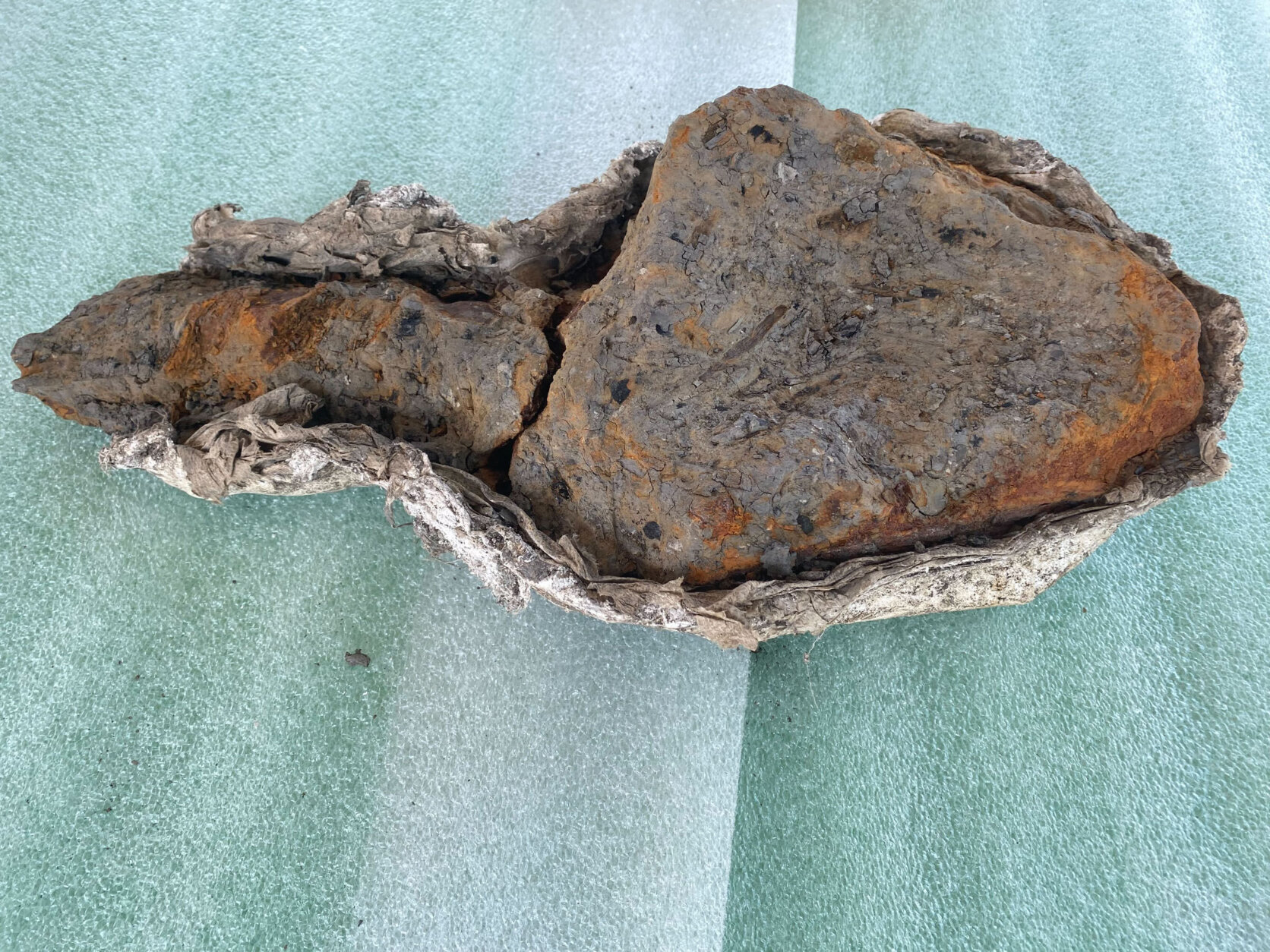
(WTOP/John Domen)
WTOP/John Domen
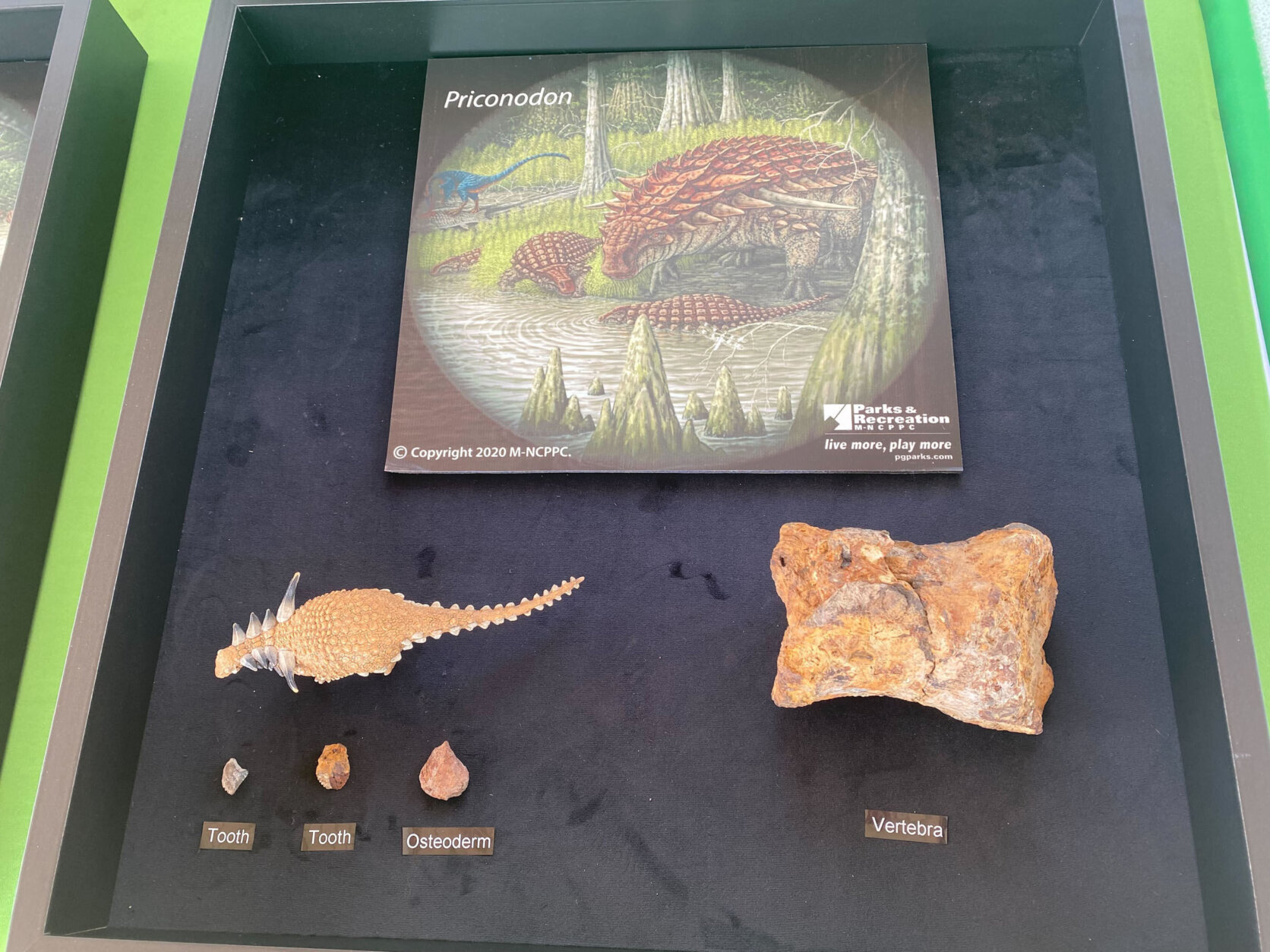
(WTOP/John Domen)
WTOP/John Domen
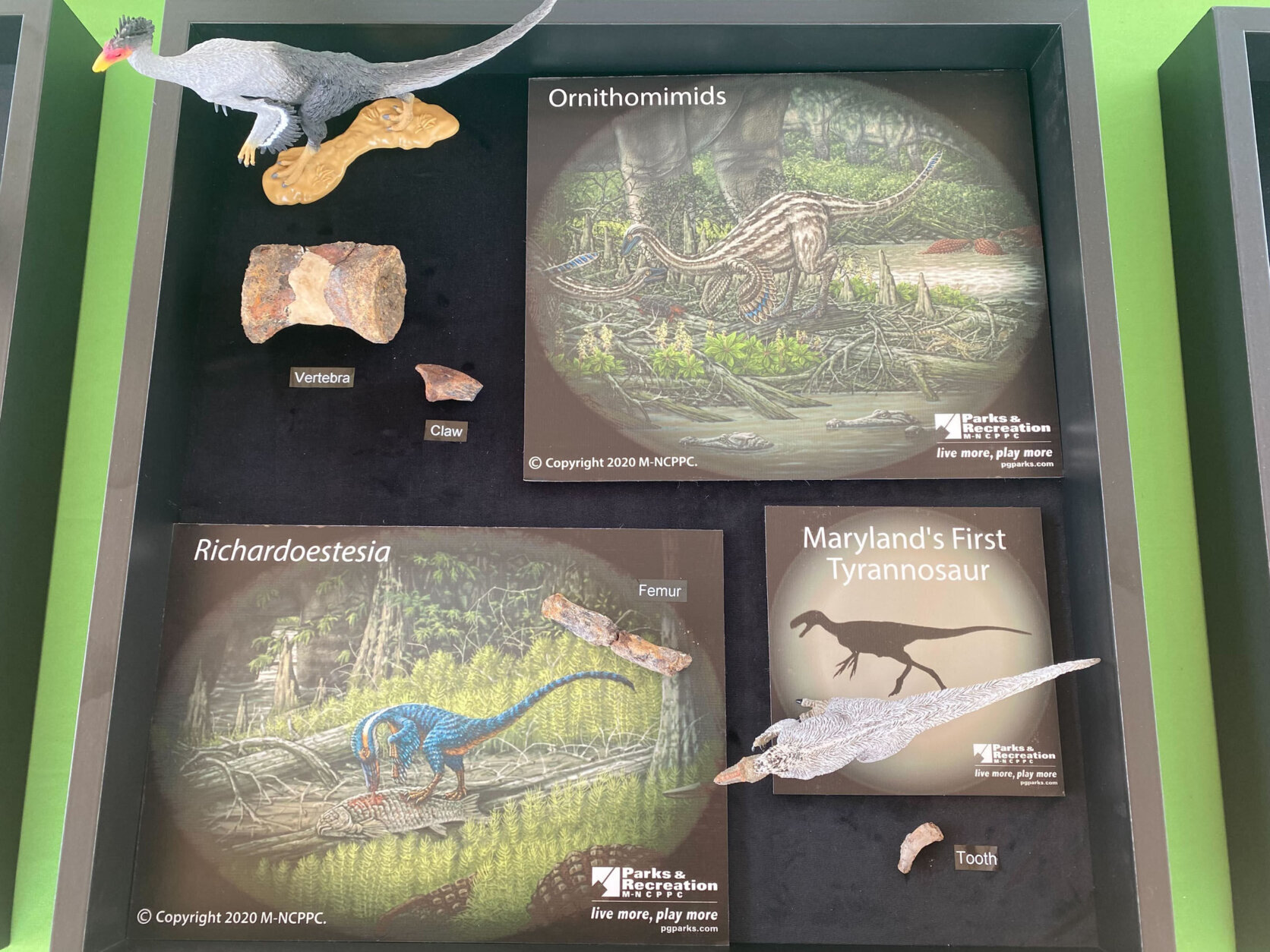
(WTOP/John Domen)
WTOP/John Domen
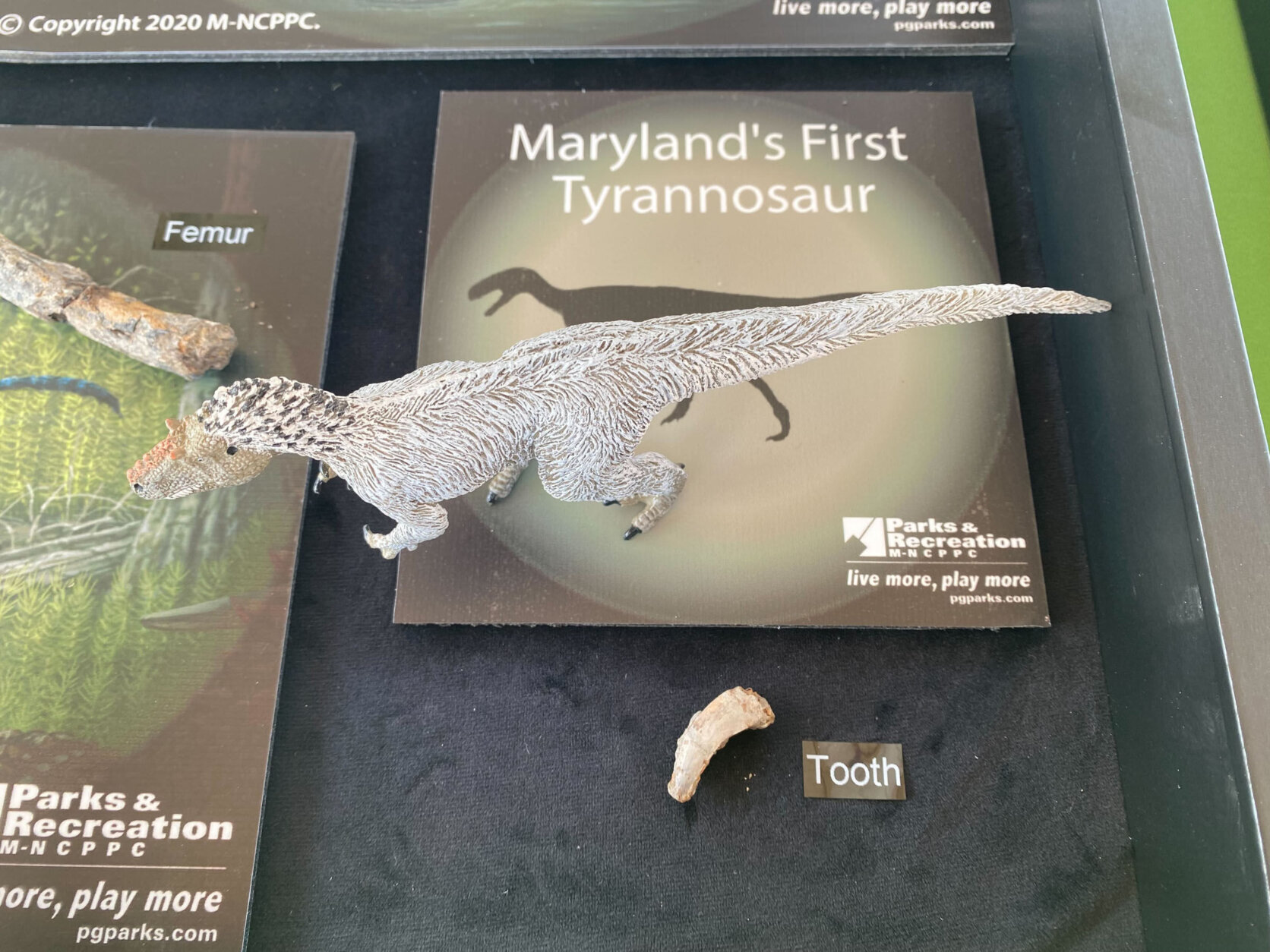
(WTOP/John Domen)
WTOP/John Domen
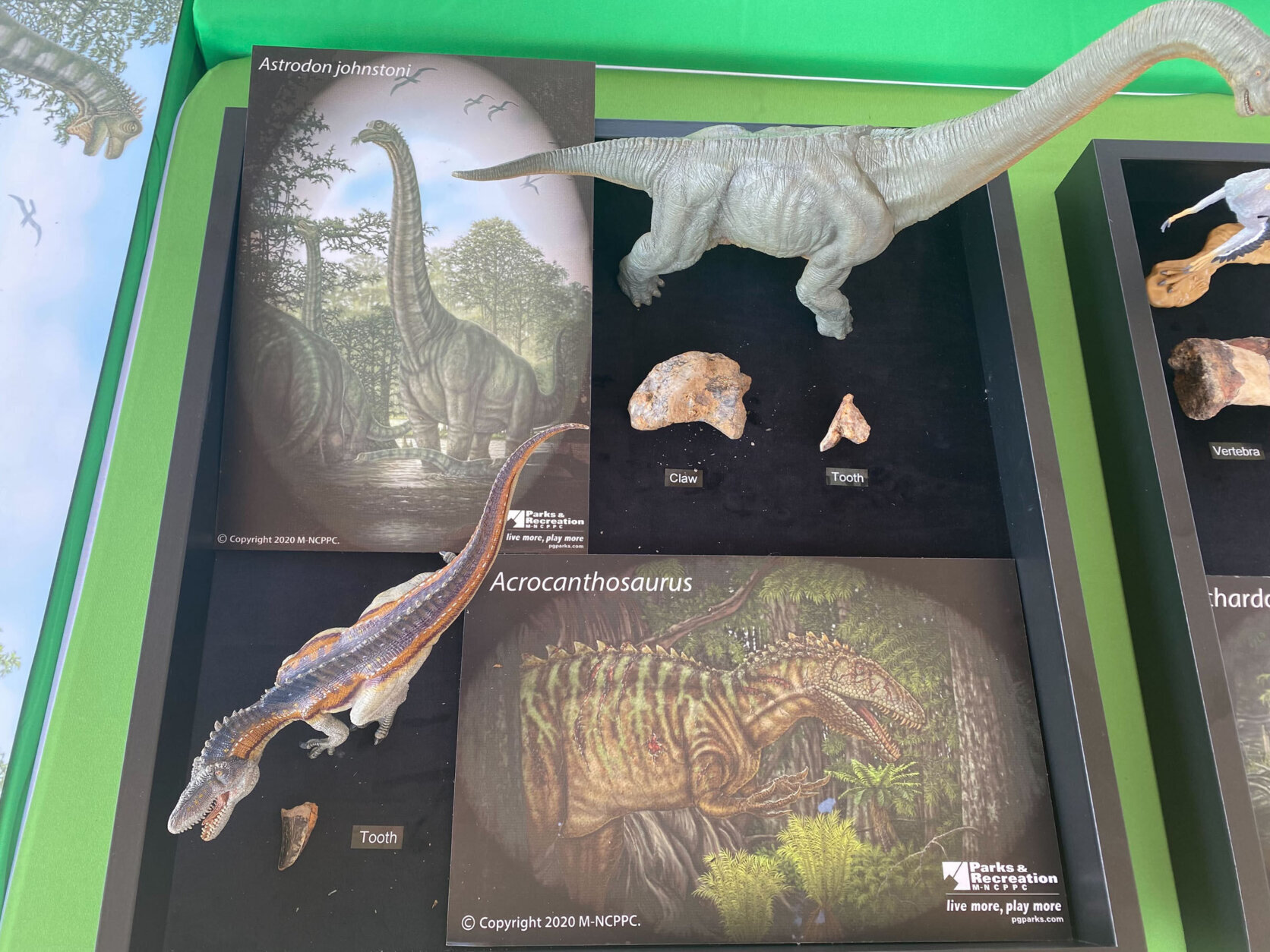
(WTOP/John Domen)
WTOP/John Domen
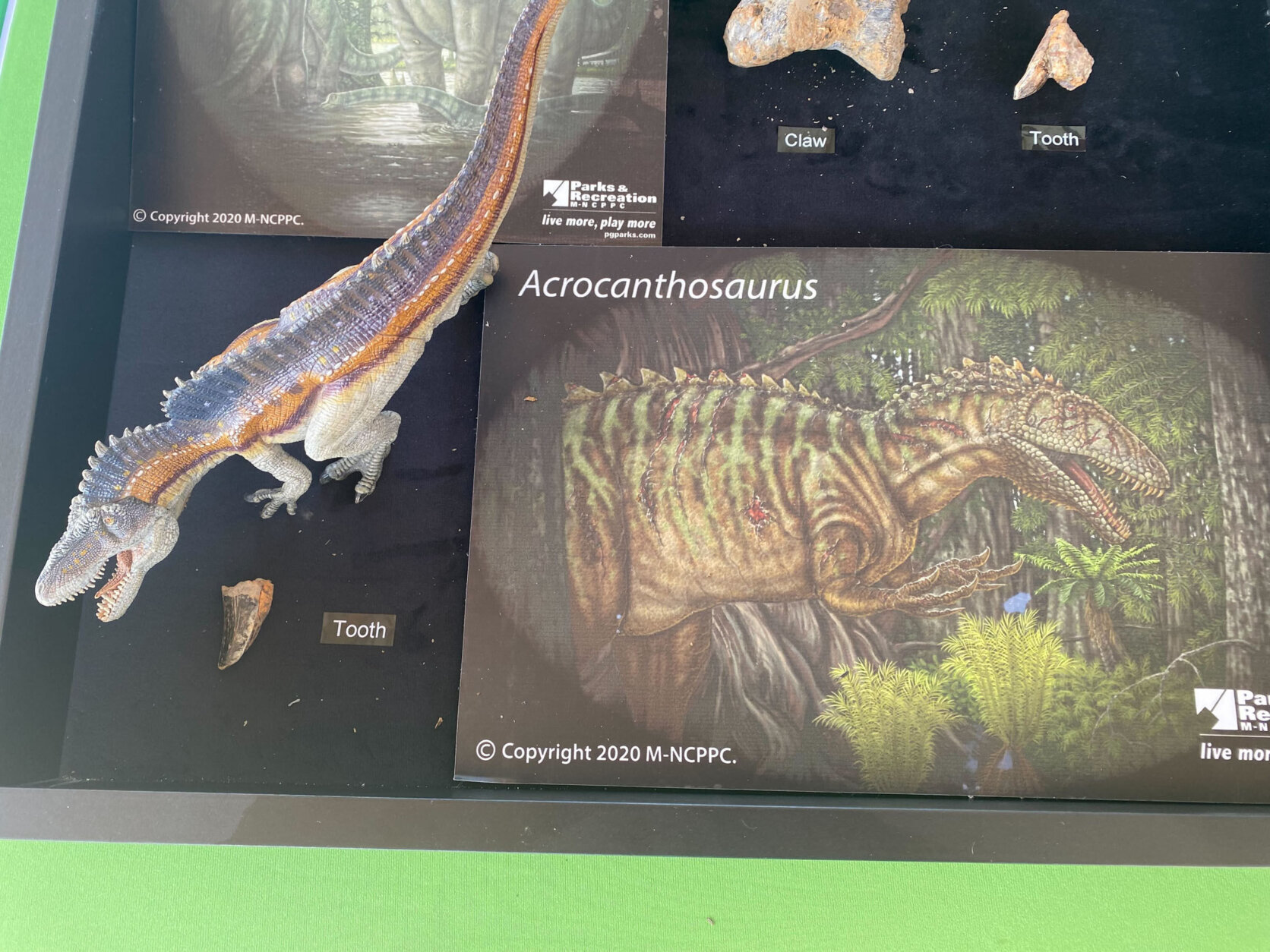
(WTOP/John Domen)
WTOP/John Domen
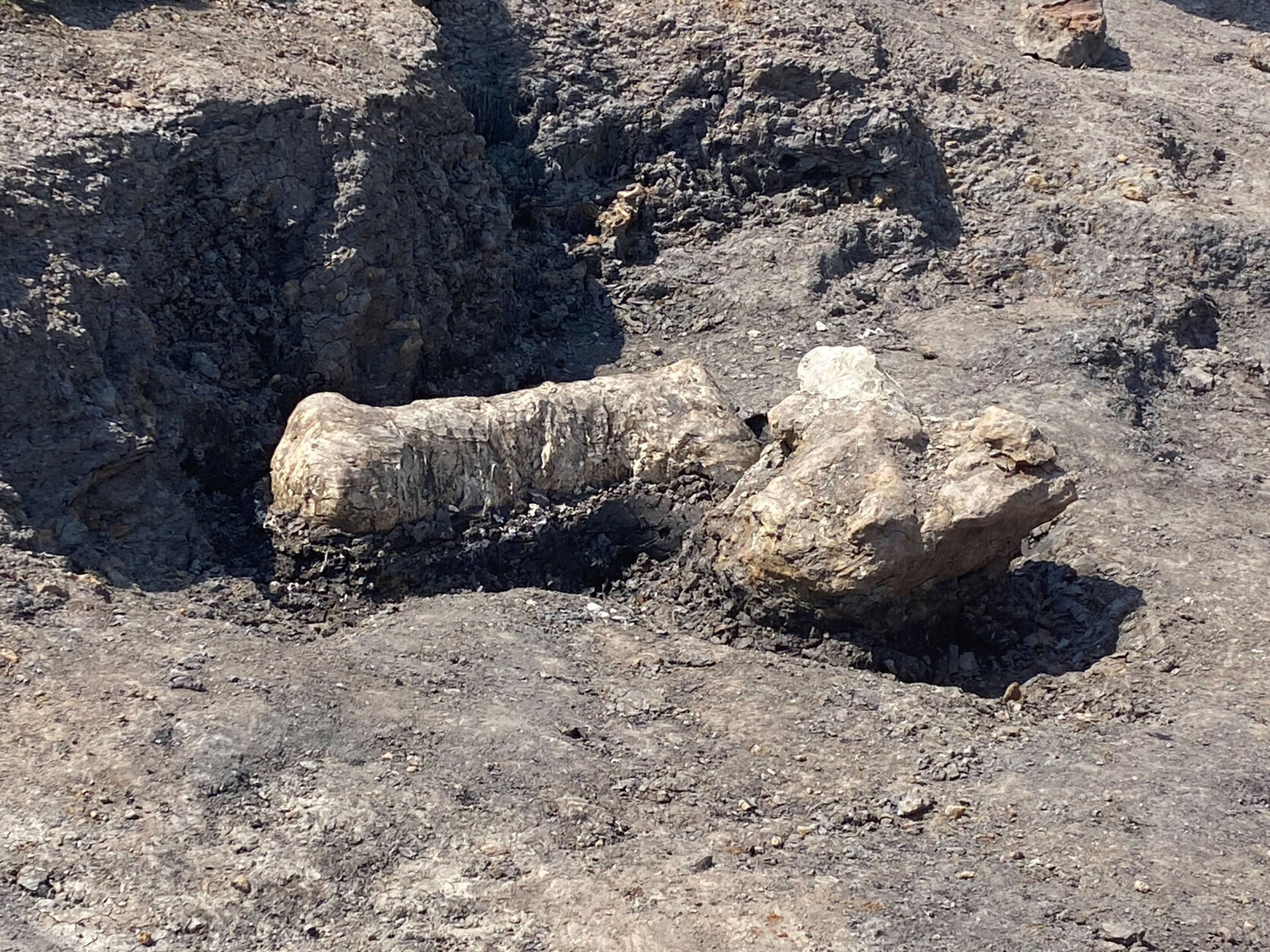
(WTOP/John Domen)
WTOP/John Domen
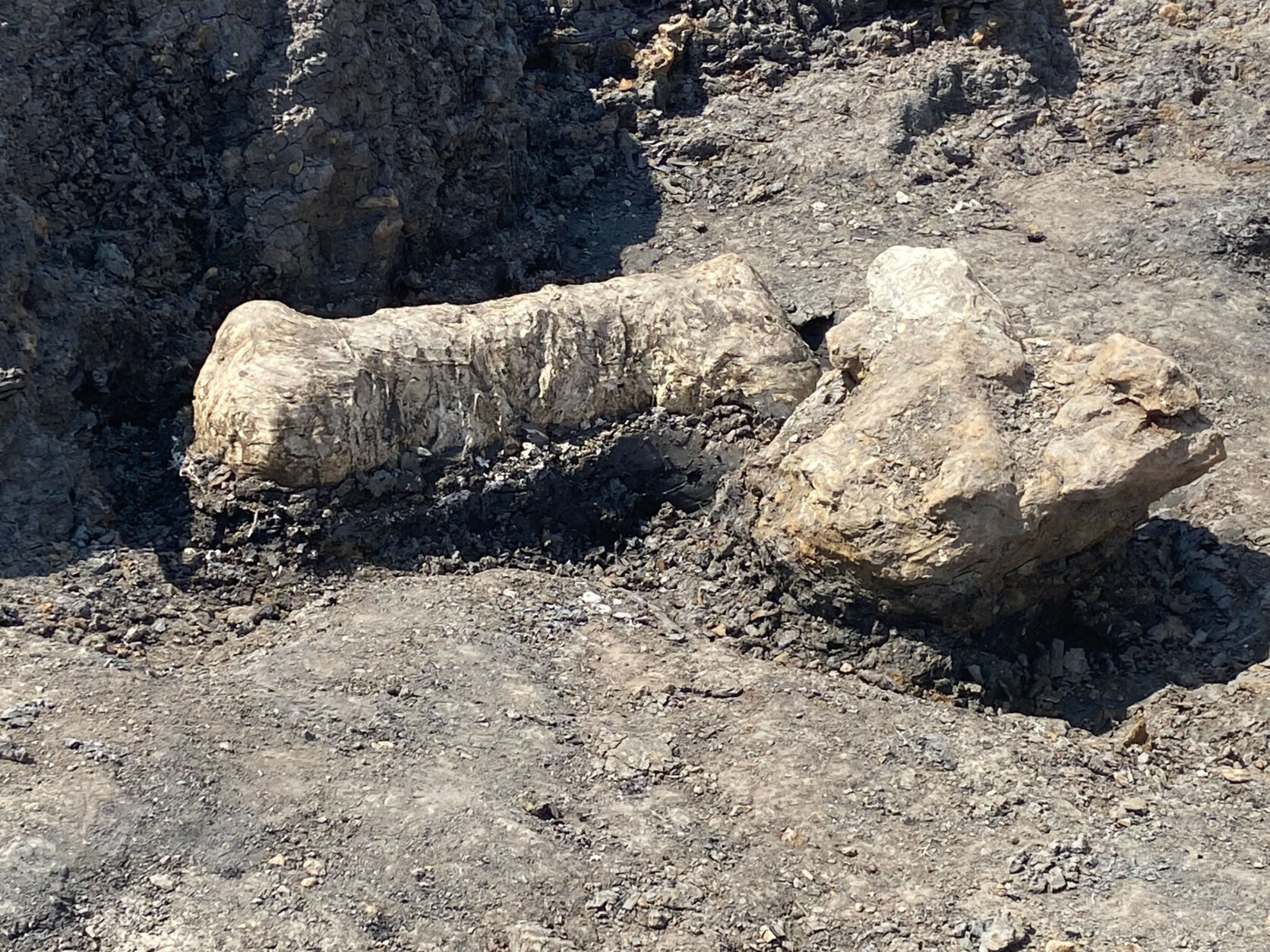
(WTOP/John Domen)
WTOP/John Domen
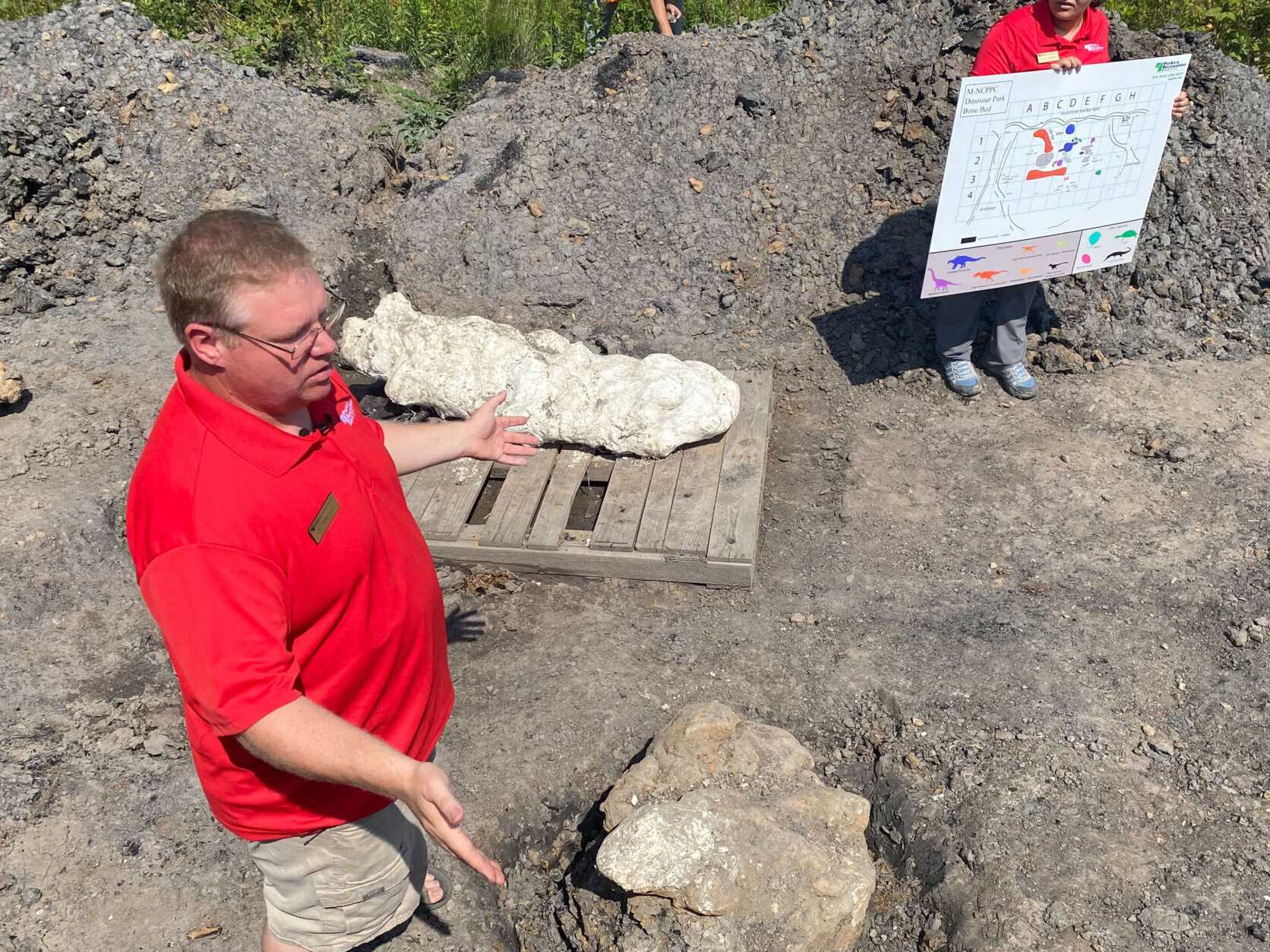
(WTOP/John Domen)
WTOP/John Domen
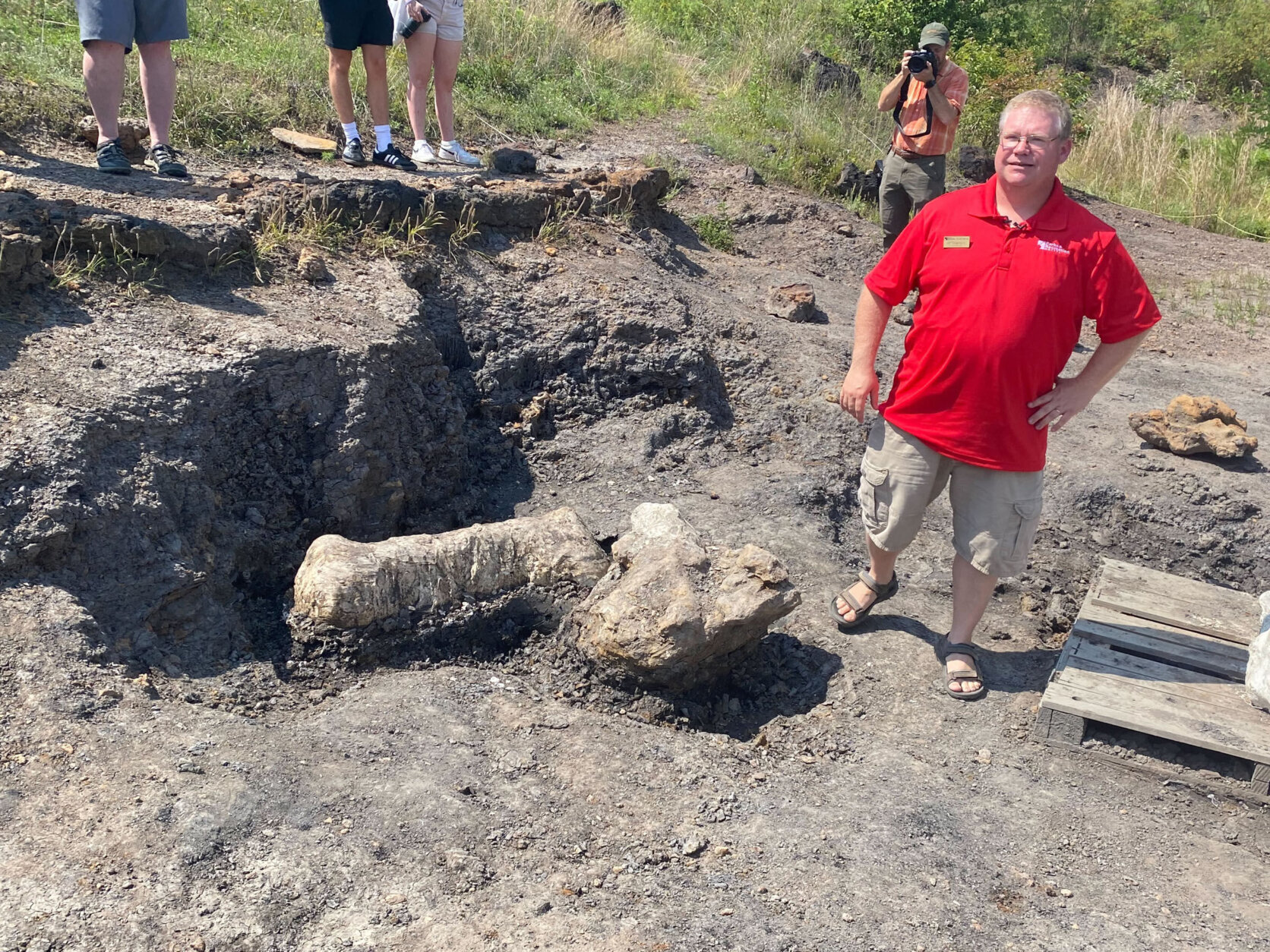
(WTOP/John Domen)
WTOP/John Domen
Scientists also believe they’ve unearthed fossils from a tyrannosaur, a precursor to the T. rex that roamed the Western United States tens of millions of years later.
“Back at this time, the tyrannosaurs were like the jackals or the coyotes,” Holtz said.
Some of the bigger bones are getting hauled away for more analysis, but thousands of fossils are believed to be embedded in the rock.
Though many of them are on the smaller side, Hodnett said it is a paleontologist’s dream site.
“People don’t think of the National Capital Region as a major center for fossils. But this site is the best dinosaur site east of the Mississippi,” Holtz said.
“And it already was before … simply on the diversity of fossils found. But now it’s even more so because we have these multiple large bones of multiple species found together. And it’s going to give us a lot more insights as to what was living here — and dying here — 115 million years ago.”
Get breaking news and daily headlines delivered to your email inbox by signing up here.
© 2023 WTOP. All Rights Reserved. This website is not intended for users located within the European Economic Area.
Stay connected with us on social media platform for instant update click here to join our Twitter, & Facebook
We are now on Telegram. Click here to join our channel (@TechiUpdate) and stay updated with the latest Technology headlines.
For all the latest Lifestyle News Click Here
